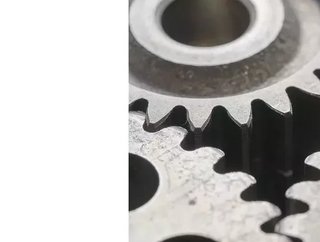The 5 Tools That Make Lean Manufacturing Thrive

Lean manufacturing is an increasingly popular methodology that aspires to minimise waste whilst simultaneously maximising productivity in manufacturing systems ─ waste, defined not by what gets thrown in the bin, but by what the customer believes. If something does not add value to the product and customers aren’t so keen on paying for it, then it’s waste. This unorthodox method led Toyota Motor Corporation to superstardom on the manufacturing scene, with their industry-leading Toyota Production System (TPS). They successfully produce some of the best vehicles on the planet, with the least waste, in the fastest possible way.
Toyota’s lean manufacturing system has been adopted by a myriad of automobile manufacturers around the world, including Ford, General Motors, and Honda, and the conventions, rules and tools at its foundation have been implemented in systems across society, including hospitals and postal services. The TPS is, for lack of better words, a stalwart norm in an otherwise ever-evolving industry.
The Five Lean Manufacturing Tools
For many small and medium-sized manufacturers today, Lean is an absolutely invaluable system that helps them maximise their potential whilst reducing their carbon footprint and overall spend. There are many tools in place to ensure this trend, but TPS provides five essentials that all executive and management figures must understand to ‘get’ the idea that has launched Toyota into the stratosphere.
Kaizen
Kaizen, simply put, is a system that strives for continuous improvement across seven different sectors: company culture, leadership, processes, productivity, quality, safety, and technology.
The idea behind Kaizen is that workplaces are inclusive and every employee, regardless of position in the hierarchy, can throw ideas into the hat for process improvement. Acceptance of opinion everybody’s doesn’t necessarily result in a major change within an organisation, but over time, there are bound to be small improvements here and there that add up and lead to significant reductions in wasted resources.
Kanban
Inventory waste and overproduction have been two of the biggest factors in overall loss in manufacturing companies across the last century. Before artificial intelligence and predictive analytics infiltrated the management scene, companies had to prepare for potential consumer demands without truly knowing what the trend would be, year-on-year. Often, this would lead to overstocking individual items, which turned out to be redundant when the consumers came calling.
Kanban alleviates this. When an item on the assembly line or a stocked item starts to run low, employees can trip a visual reorder tool that triggers an automatic reorder of the relevant inventory. Rather than ordering the maximum, the system orders just enough to replenish the amount that is actually being used at any given time, which prevents a large backlog of stock.
Nobody wants 100 car doors when there are only four cars to produce, right?
Jidoka
Jidoka is a historical art ─ in fact, it’s been around since the beginning of the 19th century. It’s the concept of designing equipment that is partially automated but will stop ─ without human influence ─ whenever a defect is detected. It’s almost like a trigger; the machine works out that there’s a problem, pauses production, and then the human overseeing the line can step in to fix the issue before the tools continue their job.
Naturally, if a machine can detect defects and doesn’t mindlessly continue regardless of them, the overall quality of final products is much higher ─ resulting in a massive cost reduction. Also, as the machines are automated, manufacturers only need one employee to watch over whole production lines. So, less human error, less wage budget usage, and higher productivity levels through robotic process automation.
Value Stream Mapping (VSM)
VSM is a visual tool that manufacturers and organisations, in general, can use to illustrate, analyse, and understand the flow of materials from the supplier to the customer as well as the flow of information within the organisation. With an overall illustration of the system, companies can easily identify production or information bottlenecks, and they can start to innovate solutions for them.
Total Quality Management (TQM)
TQM probably gives away its purpose through its name; it’s an organisation-wide approach that looks to improve the quality of products and services across the board. Through the four phases of the Deming Cycle ─ Plan, Do, Check, and Act (PDCA), TQM continuously refines and fine-tunes processes, to ensure that products and services are of the utmost quality before they reach the customer.
The five guiding principles of lean manufacturing aren’t necessarily perfect, but they are classed as industry-leading, and they’ve been prevalent in the success stories of some of the biggest multinational corporations that dominate the markets today. The tools, if you look closely, represent identifying value, mapping the value stream, creating flow, establishing pull, and seeking perfection. If you can manage that in your own organisation, just like Toyota Motor Corporation and many others, you can eliminate excess waste from your production lines, and improve overall efficiency and quality ─ ambitions that we should all hold close to our heart.
- Inside RealWear's Strategic Adoption of Finance TechnologyTechnology
- GE Vernova moves to Electrify and Decarbonise the WorldTechnology
- China's Manufacturing Dominance & Western StrategiesProcurement & Supply Chain
- Digitising Supply Chains for Due Diligence & TradeProcurement & Supply Chain






